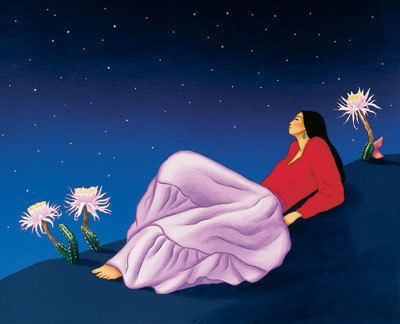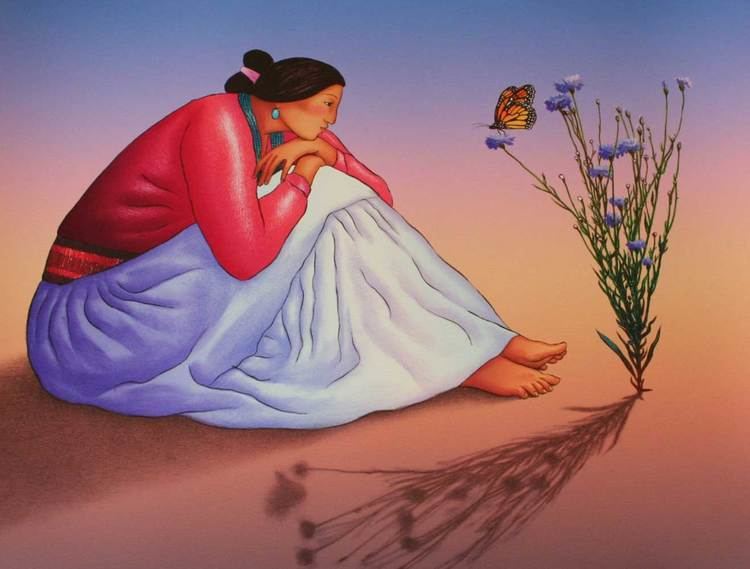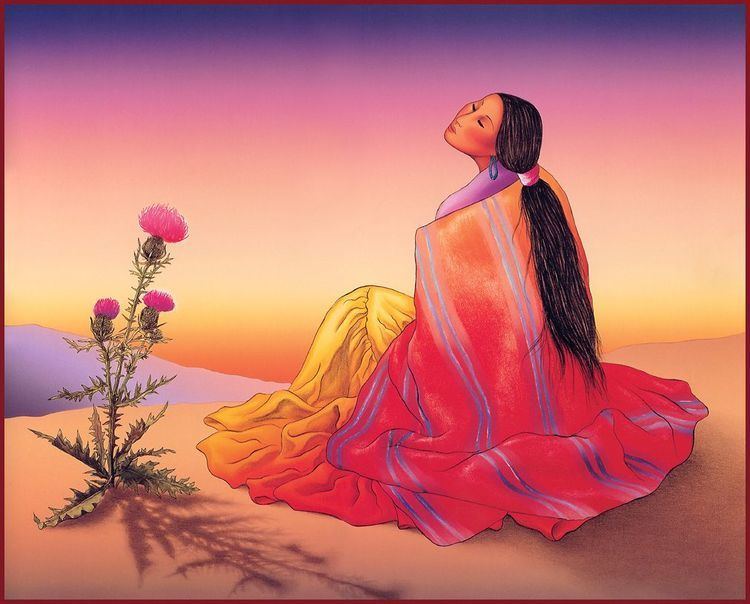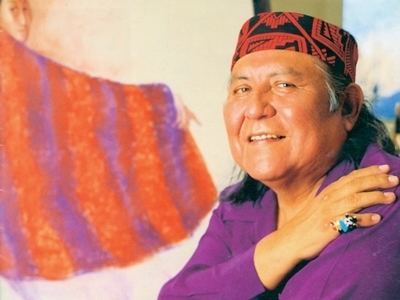Name R. Gorman | ||
 | ||
Full Name Rudolph Carl Gorman Nationality Navajo NationUnited States Artwork Nellie Begay, Yei-bi-chai, Natoma Known for Artist, Oil painting, Lithography, Sculpture Similar People Rufino Tamayo, Diego Rivera, David Alfaro Siqueiros | ||
R. C. Gorman
Rudolph Carl Gorman (July 26, 1931 – November 3, 2005) was a Native American artist of the Navajo Nation. Referred to as "the Picasso of American Indian artists" by The New York Times, his paintings are primarily of Native American women and characterized by fluid forms and vibrant colors, though he also worked in sculpture, ceramics, and stone lithography. He was also an avid lover of cuisine, authoring four cookbooks, (with accompanying drawings) called Nudes and Food.
Contents

Early life and education
Rudolph Carl Gorman was born in Chinle, Arizona. His mother was Adele Katherine Brown, and his father Carl Nelson Gorman was a noted Navajo painter and teacher, who later became a Navajo code talker during World War II.

Gorman grew up in a traditional Navajo hogan and began drawing at age 3. His grandmother helped raise him, recounting Navajo legends and enumerating his genealogy of artist ancestors. She kindled his desire to become an artist. While tending sheep in Canyon de Chelly with his aunts, he used to draw on the rocks, sand, and mud, and made sculptures with the clay, with his earliest subjects including Mickey Mouse and Shirley Temple.

He credited a teacher, Jenny Lind at Ganado Presbyterian Mission School, for his inspiration to become a full-time artist. After he left high school, he served in the United States Navy before entering college, where he majored in literature and minored in art at Northern Arizona University.

In 1958, he received the first scholarship from the Navajo Tribal Council to study outside of the United States, and enrolled in the art program at Mexico City College. There he learned of and was influenced by the work of Diego Rivera. He later studied art at San Francisco State University, where he also worked as a model.
Career
Gorman moved from California to New Mexico, opening the R. C. Gorman Navajo Gallery in Taos in 1968. It was the first Native American-owned art gallery in Taos.
In 1973, he was the only living artist whose work was shown in the “Masterworks of the American Indian" show held at Metropolitan Museum in New York City. One of his pieces was selected for the cover of the exhibit's catalog.
Gorman's work was explored in a series on American Indian artists for the Public Broadcasting System (PBS). Other artists in the series included Helen Hardin, Charles Loloma, Allan Houser, Joseph Lonewolf, and Fritz Scholder.
Later life
In 1998, he donated art for Tom Udall's campaign for election to the U.S. House of Representatives, and in 2003, donated his personal library to Diné College in Tsaile, Arizona.
On September 18, 2005, Gorman fell at his home and was taken to Holy Cross Hospital in Taos. On September 26, he was transferred to University Hospital (in Albuquerque). He died at age 74 on November 3. New Mexico governor Bill Richardson ordered flags flown at half-staff in his honor.
Influences
Gorman learned about the work of the Mexican social realists: Diego Rivera, David Siqueiros, and Rufino Tamayo. He became inspired by their colors and forms to change from abstraction to abstract realism. He used abstract forms and shapes to create his own unique, personal realistic style, recognizable to all who are acquainted with his work. While in Mexico, he also learned stone lithography from a master printer, Jose Sanchez. He used lithography throughout his life as a means of making original multiple images of his inspirations, often working by drawing directly on the stones from which the lithographs were printed.
